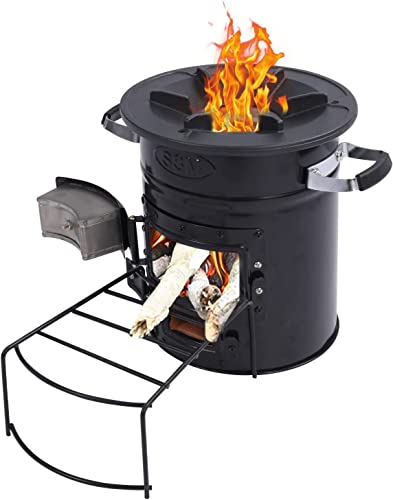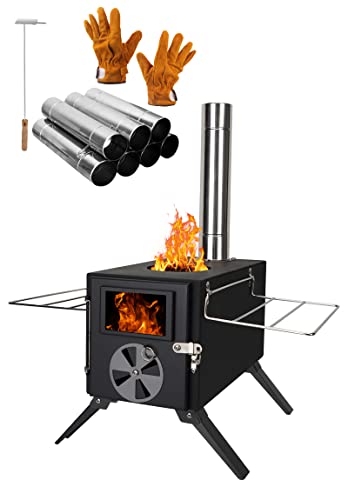What Is Woodburning Stove? And How To Use It
페이지 정보

본문
 How to Properly Operate a Woodburning Stove
How to Properly Operate a Woodburning StoveWood stoves can be a cozy and inexpensive way to heat the home. Smoke from wood burner fireplace ideas stoves can be dangerous to your health. It is essential to understand how these appliances work and how to use them safely.
Many modern stoves rely on a catalytic or secondary combustion to control their emissions. Older stoves and open flames release high levels of particulates.
The firebox
The firebox is the heart of any fireplace system. It's where you create a fire to heat your home and provide ambiance. It's a simple concept, but there are many important details that must be accounted for to keep your wood burning stove safe and efficient.
The firebox is considered a combustion chamber that has walls and a lid. Most fireplaces have either a prefabricated metal or brick firebox. The type of firebox you choose will depend on your preferences as well as the kind of fireplace you own.
Most wood-burning fireplaces use a constant air flow to start the fire and burn fuel. Fresh air is pumped into the stove via dampers that can be adjusted inside the doors. This allows the fuel to burn properly and helps to reduce toxic gases that are generated by unburnt or incomplete combustion. The exhaust gases are then transported through the chimney and safely out of your home.
Modern stoves that have catalytic second combustion employ a special catalyst that allows unburned gases to be reburned to create additional warmth. This produces a cleaner and less polluting emission than traditional wood stoves with no secondary combustion. Modern non-catalytic stoves are available, but they're typically less efficient than stoves with secondary combustion catalytically.
Certain wood-burning stoves come with backboilers that can be used to heat water in addition to space heating. These stoves are known as "hybrids" or "combination". They are in use since the beginning of the 20th century.
Wood burning stoves should be burned with well-seasoned wood. Freshly cut wood bruner (green) has an excessive amount of water. This could lead to low flue temperatures, and excessive creosote accumulation within the chimney. This could lead to chimney fires that cause damage to the stove wood burning and can even be dangerous to your family's health.
If you're looking for a professional who can inspect your large wood burning stove-burning stove or do repairs to your firebox, be sure the chimney professional you hire has CSIA certification and also has customer testimonials on their site. It is also essential to inquire about their rates and what type of work they do.
The pipe for ventilation
Ventilation is a must for wood stoves to remove smoke and keep the home safe and warm. Ventilation is necessary to remove carbon monoxide and nitrogen dioxide from the process of combustion. It also helps reduce the amount of air pollution and heat loss to the woodburner outdoor. Wood, pellet and gas stoves have different requirements for venting to accommodate the different ways they function. Properly maintaining the stove's ventilation system annually is critical for safety and efficiency.
The ventilation system is comprised of the firebox, the ventilation pipe and the chimney. The chimney and ventilation pipe work together to create a draft that draws smoke from the stove out through the fireplace. The differences in temperature and densities of the hot wood smoke and cold outside air creates draft. The more hot the temperature, the more smoke will rise through the ventilation pipe and chimney.
The majority of modern wood stoves are certified by the EPA as low-emission units. They produce less pollution than older models that contribute to global warming and other environmental problems. Modern stoves are equipped with pollution control systems that reduce the amount of emissions while making sure that they burn efficiently.
Older stoves that have open flues produce more carbon dioxide. This is a toxic gas that is toxic and must not escape into your home. This can happen if your chimney isn't clean or there is inadequate ventilation, so it is crucial to install carbon monoxide detectors in your home.
Measure the distance between the chimney's opening in the wall or ceiling and the location where the wood stove is on the floor. Multiply this distance by two to determine the length of stovepipe that you require. You can use a single-wall or double-wall stovepipes however, you must ensure adequate clearance from burning combustibles.
When the stove first starts to burn, adjust the air vent until a good flame has been established and combustion is stable. It is best to avoid using wood logs in the stove because they may contain volatile chemicals that can cause the air vents to fail.
The chimney
The chimney may not seem like something that homeowners give a lot of thought to, but it's an intricate system that requires care and attention. From top to bottom the chimney is comprised of a variety of essential components that are crucial to ensure that your stove works safely and efficiently.
The firebox, the ventilation pipe and chimney work together to exhaust the combustion gases generated by your woodburning stove the outside. This is essential to lower carbon dioxide levels and prevent harmful emissions. To achieve this, the flue and chimney must be sufficiently hot to remove the gases from the fireplace without cooling. This can be achieved by using a woodburning stove with a high heat output and by regularly adding new logs to the fire.
Modern wood-burning stoves have a higher chimney than older models to enhance the drafting effect. This could cause problems when the chimney's height is higher than the maximum for your location. In this situation the chimney could be competing with the house's stack for airflow, causing gases to cool down before leaving. This could impede the gas flow and cause a buildup of creosote which could pose a fire danger.
The most frequent mistake that homeowners make is to open the fireplace door and close it often. This can cause problems with combustion. It is important to keep the fireplace door closed whenever possible, and only open it when you're required to add more ash or firewood. If you leave the door open for too long allows hot air to escape the stove, which causes the logs to get cooler and more difficult to light. It releases volatile compounds that are not burned into the room.
Other types of combustibles can cause higher emissions or even an explosion in a chimney. Woodburning stoves were designed and optimized to burn wood for fire. They are not suitable for other combustion products.
The flu
A woodburning stove requires a properly size flue to permit adequate air flow and draft development. Typically, the dimensions of the flue has to be at 25 percent greater than the stove pipe (which connects the stove to the chimney) to provide enough space for smoke passage. In addition the wood stove should be installed on an open hearth made of a non-combustible material and has a clear, unobstructed area that is in front of the fireplace opening.
Modern stoves are equipped with a catalytic combustion system that reduces the amount of harmful byproducts that get released into the chimney. This feature can increase the efficiency of wood stoves by burning a fire which generates more heat while releasing less pollution. Using other types of combustibles than firewood, however, can cause problems, such as lower efficiency and more emission levels.
It is essential to use dry or seasoned small Wood burning fireplace when you are burning wood in your fireplace or stove. If your wood is not seasoned or dry, it will emit high levels of creosote and water vapour into the chimney. This can lead to low flue temperatures and a chimney fire.
A professional can also help you avoid an explosion in your chimney by regularly inspecting and cleaning the flue system. This includes the stovepipe, the chimney and the chimney itself.
A dirty stove or system may lead to an insufficient draft inside your chimney, which can cause carbon monoxide to accumulate in your home. This can be harmful to your family members and should not be allowed to occur.
It is a good idea to have your chimney and stove cleaned by a professional at least every year. This will help keep your chimney and stove operating efficiently.

- 이전글Water Damage Restoration & Repair 24.09.01
- 다음글The Mafia Guide To Watch Free Poker Videos & TV Shows 24.09.01
댓글목록
등록된 댓글이 없습니다.


 블로그체험단 바로가기
블로그체험단 바로가기